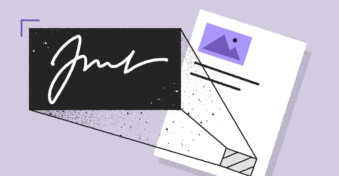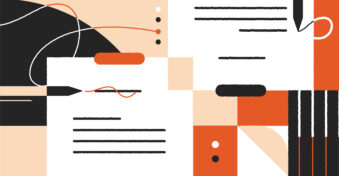What is a waiver form? Waiver forms are an essential tool to protect you and your business from potential liability. Without a waiver, you could expose yourself to legal liability and the possibility of being sued even if the incident wasn’t your fault. This is why there are over 20 digital waiver solutions available.
But what do you need to know to ensure you create a legally enforceable document? This article lays out what a waiver form is, why you should use one, and what to avoid.
What Is a Waiver Form?
This is a written agreement that minimizes a business’s potential liability. These documents waive liability and prove that customers were fully aware of a certain activity’s risk and knowingly accepted them.
In most cases, customers will not be able to proceed with the activity if they don’t sign the liability release. However, you cannot be forced to sign a waiver since the relinquishing of legal rights must be voluntary. In these instances, the most a business can do is refuse service if the customer doesn’t sign.
Who Needs a Waiver Form?
Businesses commonly use these documents to protect themselves from potential liability and civil claims. However, individuals may also need a liability release when lending their car, lawnmower, or other heavy equipment to friends to protect themselves from legal claims.
Examples of businesses that need waiver forms include:
- Fitness centers
- Rock climbing gyms
- Extreme activity providers
- Healthcare providers
- Private clubs
- Golf courses and driving ranges
- Salons and spas
- Swimming pools

Why Should You Use a Waiver Form?
Waiver forms are a key part of communicating potential risks to customers while simultaneously protecting your business from any liability resulting from risky activities.
A few risks that could be included in your release of liability document include:
- Property damage
- Emotional distress
- Injury
- Illness
- Death
Once the waiver form has been signed, the customer cannot sue the company for any injuries that occur on the property unless there is gross negligence.
Can a Court Reject a Waiver Form?
Courts are unlikely to uphold waivers if they do not clearly, accurately, and comprehensively describe the potential risks involved with the activity. Courts also require the liability release to describe the activity’s time, date, and location. In cases of gross negligence, the court will most likely reject your waiver form.
How to Write a Waiver Form?
There are a few steps you need to follow when creating a legally binding waiver form to ensure that it will be enforceable in court.
Step 1. Formatting
Before you start writing your waiver form, be sure to set your font size to 12. Your title should be bolded and centered between the margins of your document in a font size larger than the rest of the body text. Any text with a font size of 11 or smaller may be deemed invalid in court and could compromise the validity of your document.
Step 2. Risks
Your form needs to include a written description of the risks the customer may face. This list should use plain language, be an accurate representation, and cover any potential risks.
Below the list of risks, you should include an assumption of risk clause. Essentially, this clause states that the signatory is fully aware of the potential risks and voluntarily assumes the risk while relinquishing the right to sue you.
Step 3. Insurance and choice of law
When writing your waiver form, you should add a clause stating that you and your company will not provide insurance coverage to the Releasor if they are injured or killed.
A choice-of-law clause is also helpful — especially if the Releasor is from another jurisdiction — to remove any ambiguity around which regulations apply and in which jurisdiction and venue a dispute would be addressed.
Step 4. Signature
Finally, your waiver form will need a legally binding signature (either electronic or wet ink) to ensure it is upheld in court. Be sure to include the name of the signatory below the signature as well as their address and contact information.
Minors are not capable of entering into legally binding agreements. In such cases, only a parent or guardian can sign the liability release. You should also include a date and time to prove that the form was signed prior to any injury.
Final Thoughts
As you can see, waiver forms are extremely useful and can protect you from liability if things go south. By following the four steps above, your waiver forms are more likely to be legally valid in court.
If you want to create legally compliant waiver forms in minutes, try PandaDoc’s Digital Waiver Solution now.


